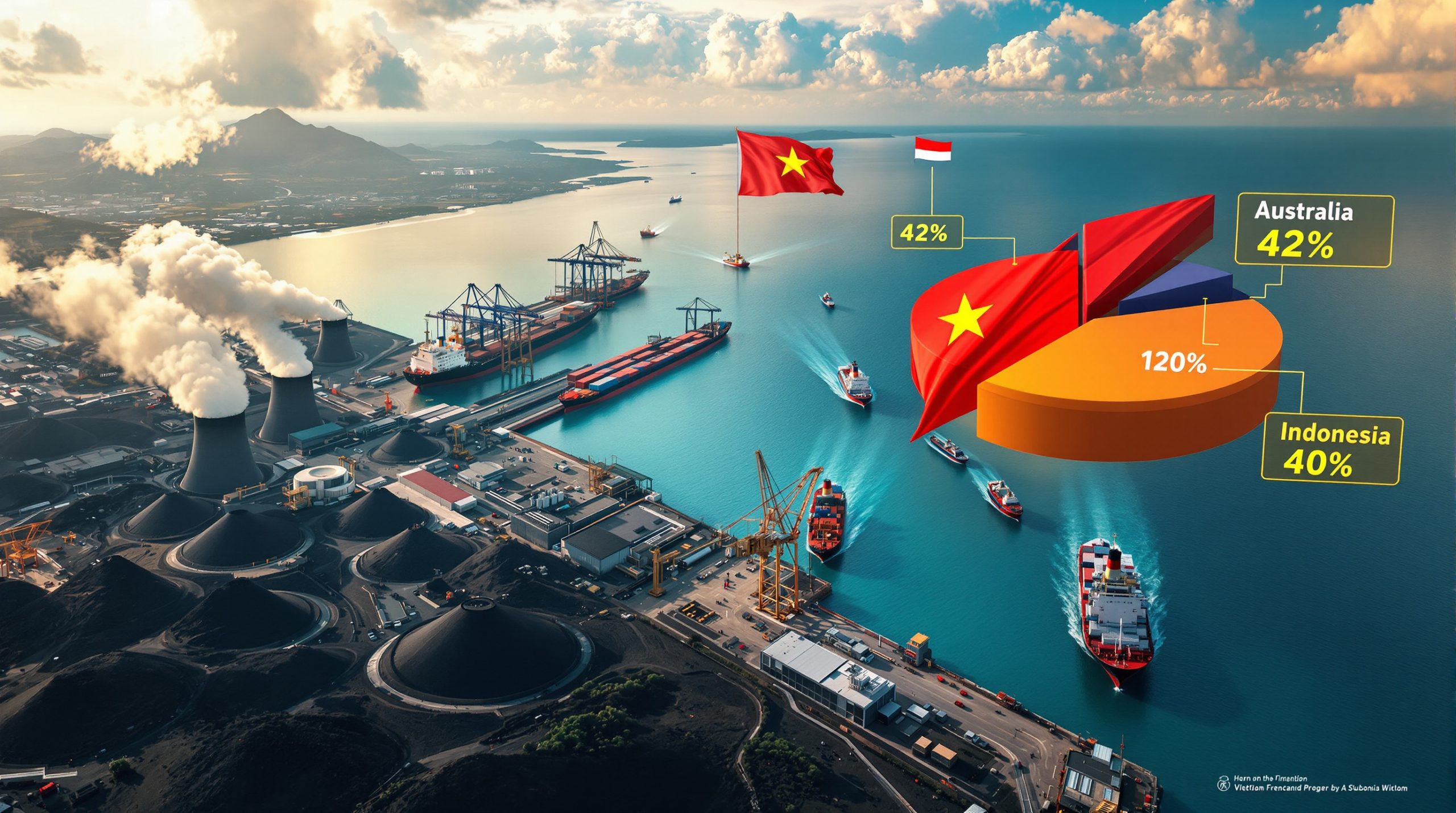The global energy landscape stands at a crossroads where national security imperatives increasingly intersect with nuclear fuel supply chains. A strategic uranium reserve has emerged as essential infrastructure for nations seeking to insulate their nuclear power generation from volatile international markets and geopolitical disruptions. Unlike commercial utility stockpiles that respond to reactor refuelling schedules, these government-controlled reserves serve as emergency buffers designed to maintain energy security during supply crises.
Understanding Strategic Uranium Reserves: Critical Infrastructure for Energy Independence
Strategic uranium reserves represent a fundamental shift in how nations approach nuclear fuel security. These government-managed stockpiles differ markedly from traditional commercial inventory management, functioning as policy-driven accumulation rather than market-responsive storage. The distinction proves critical during supply disruptions when commercial inventories may prove inadequate for sustained operations.
Modern reserve systems encompass multiple components working in coordination:
• Physical uranium stockpiles maintained at secure government facilities with specialised storage protocols
• Domestic production capacity developed through targeted public-private partnerships
• Enrichment infrastructure capable of processing raw uranium into reactor-grade fuel
• Emergency distribution protocols ensuring rapid deployment to critical energy infrastructure
The technical specifications for these reserves require sophisticated management approaches. Storage facilities must maintain material quality over extended periods while ensuring accessibility during crisis scenarios. Security protocols protect against both theft and sabotage, while inventory management systems track material characteristics and degradation patterns.
Core Components of Modern Reserve Systems
Strategic reserve architecture involves complex technical and logistical considerations beyond simple stockpiling. Nations must balance storage capacity with security requirements, often requiring specialised facilities designed for long-term uranium preservation. These facilities typically include climate-controlled environments, radiation monitoring systems, and multi-layered security protocols.
The integration of domestic production capabilities within reserve frameworks creates additional complexity. Governments must coordinate with private mining operations while maintaining strategic autonomy, often requiring sophisticated contract structures that balance commercial viability with national security objectives.
The Geopolitical Imperative: Why Nations Are Building Uranium Stockpiles
Energy Security in an Uncertain World
The global uranium market exhibits concentration patterns that create significant vulnerabilities for nuclear-dependent nations. Current market dynamics reveal concerning dependencies that strategic uranium reserves aim to address. Industry analysis indicates that nuclear energy represents approximately 10% of global electricity generation, making uranium supply security essential for maintaining grid stability across major economies.
Recent market data reveals structural challenges in uranium supply chains. As one market analyst explained, the uranium sector has experienced a fundamental transformation over the past nine years since spot prices bottomed in December 2016. The current environment shows spot uranium trading at approximately $76 per pound while term market uranium reaches $85 per pound, indicating sustained upward pressure on pricing. Furthermore, uranium market volatility continues to drive strategic planning decisions across government agencies.
Supply Chain Concentration Risks
The concentration of uranium production among a limited number of producers creates systemic risks that strategic reserves help mitigate. Analysis of global production patterns reveals significant dependencies:
| Country | Production Share | Strategic Vulnerabilities | Key Operational Factors |
|---|---|---|---|
| Kazakhstan | 34% | Geopolitical instability, Russian partnership pressure | Value-over-volume strategy since 2018, ISR technology |
| Canada | ~15% | Weather-dependent operations, project timeline risks | Cigar Lake concludes in 10 years, MacArthur River expansion potential |
| Australia | ~12% | Export policy changes, regulatory shifts | Stable operations but policy-sensitive |
| Russia | 8% | Sanctions exposure, enrichment dominance | Limited uranium resources but extensive processing capacity |
Kazakhstan's position deserves particular attention given its dominant market share. The country's state-owned Kazatomprom has shifted toward a "value over volume" strategy following partial privatisation in 2018. Industry insights suggest that maintaining current production levels will require hundreds of millions in capital investment, with company projections indicating production roughly 20% below current levels by 2035.
More concerning, Kazatomprom's own competent persons report acknowledges that meeting global demand projections requires "another one or two Kazatomproms in the next 15 to 20 years and those don't exist." This admission from the world's largest uranium producer underscores the supply constraints driving strategic reserve development.
Demand Projections and Market Dynamics
Nuclear capacity growth projections have shifted dramatically, creating additional urgency around strategic stockpiling. The World Nuclear Association's reference scenario shows uranium demand in 2040 at 50% higher levels than projected in 2019. This represents a compound annual growth rate shift from 1-2% to approximately 4% for nuclear capacity globally.
The demand transformation stems from multiple converging factors:
• Electricity demand growth driven by data centres and artificial intelligence infrastructure
• Energy security concerns following geopolitical disruptions
• Clean energy mandates supporting nuclear expansion
• Grid stability requirements necessitating baseload nuclear capacity
These demand drivers operate independently of traditional utility procurement cycles, creating sustained pressure on uranium markets that strategic reserves must accommodate. Consequently, uranium spot price dynamics continue to reflect these underlying market tensions.
United States Strategic Reserve Development: Policy Framework and Implementation
Legislative Foundation and Current Administration Priorities
The United States established its strategic uranium reserve during the first Trump administration, providing the initial framework for government stockpiling activities. The programme received Congressional appropriations totalling $75 million in 2020, establishing the foundation for broader reserve development. However, the implementation has been significantly influenced by the US uranium import ban which creates additional urgency for domestic supply security.
Current policy leadership under Energy Secretary Christopher Wright signals accelerated nuclear development priorities. Wright has indicated expectations that the majority of DOE loan programme funds will support new nuclear construction, while simultaneously discussing strategic uranium reserve expansion. This policy alignment creates momentum for comprehensive nuclear fuel security initiatives.
The strategic reserve expansion faces implementation challenges requiring coordination across multiple agencies. Success depends on balancing commercial market dynamics with national security objectives while maintaining cost-effective procurement strategies.
Timeline and Capacity Development
Strategic reserve implementation follows a phased approach designed to achieve supply security while supporting domestic production capacity:
Phase 1 (2025-2026): Initial stockpile establishment through strategic purchasing programmes targeting domestic uranium sources.
Phase 2 (2027-2028): Russian uranium import phase-out completion, requiring alternative supply source development and enrichment capacity expansion.
Phase 3 (2030): Full domestic enrichment capacity operational, reducing dependencies on foreign processing capabilities.
Phase 4 (2035): Strategic reserves reaching target capacity levels with sustainable domestic production supporting ongoing requirements.
Domestic Production Partnerships and Industry Development
Strategic reserve programmes create new revenue streams for domestic uranium producers through guaranteed government contracts. These arrangements provide development financing for projects that might otherwise struggle to secure commercial funding at current market prices. In addition, enhanced focus on US uranium production has become a cornerstone of energy independence initiatives.
However, implementation faces significant challenges related to project development timelines and production cost realities. Industry analysis reveals that companies recently starting production maintain all-in sustaining costs below $40 per pound while selling at $65 per pound yet still operate at losses due to fully allocated production costs significantly exceeding reported sustaining costs.
This cost structure explains why major producers demand contract terms with market reference pricing and ceilings as high as $140 per pound or higher, even with current spot prices at $76 and term prices at $85. The disconnect between current pricing and production incentive requirements creates ongoing tension between government reserve objectives and private sector commercial viability.
International Strategic Reserve Models: Comparative Analysis
China's Comprehensive Stockpiling Strategy
China maintains the world's most extensive strategic uranium stockpiling programme, with reserves exceeding 600 million pounds of U3O8 equivalent. This massive accumulation includes both military-grade reserves for defence applications and civilian stockpiles supporting rapid nuclear expansion. Importantly, these strategic reserves remain sequestered within China and never enter international markets, regardless of price conditions.
China's approach differs fundamentally from Western models through its integration of state policy with resource nationalism. Rather than responding to market price signals, Chinese stockpiling represents long-term strategic positioning divorced from commercial profit motives. The country maintains minimal domestic uranium production, primarily sourcing material through operations in Namibia and joint ventures in Kazakhstan.
This stockpiling strategy provides China with negotiating leverage in international energy discussions while insulating domestic nuclear expansion from supply disruptions. The scale of Chinese reserves, equivalent to approximately 12 years of current reactor demand, demonstrates the strategic priority placed on nuclear fuel security.
European Union Collective Security Approach
European Union nations maintain approximately 2.5 years of uranium supply through coordinated stockpiling arrangements designed to reduce single-source dependencies. The EU model emphasises diversified supplier relationships and joint procurement initiatives that leverage collective bargaining power while maintaining member state autonomy.
This approach includes emergency sharing protocols during supply disruptions, creating redundancy across the European nuclear fleet. Joint procurement initiatives allow smaller EU members to access uranium supplies that might otherwise prove economically challenging to secure independently.
Russian Enrichment Dominance and Strategic Implications
Russia's position in global uranium markets demonstrates the complexity of supply chain dependencies that strategic reserves address. Despite maintaining the most conversion and enrichment capacity globally, Russia faces significant uranium resource limitations. This creates a situation where Russia possesses extensive processing capabilities but requires external uranium sources to fulfil its substantial nuclear export order book.
The conclusion of the Megatons to Megawatts programme in 2013 eliminated a significant source of uranium supply to U.S. reactors. This 20-year programme provided 20 million pounds annually through Russian nuclear warhead down-blending, representing a supply source that strategic reserves must now replace through alternative means.
Market Dynamics and Price Implications
Supply-Demand Fundamentals Driving Reserve Policies
Strategic reserve development occurs against the backdrop of increasingly tight uranium markets characterised by unusual pricing dynamics. Recent market data reveals term market volumes down 45% year-to-date while prices increased $5 per pound, indicating undersupplied market conditions rather than demand saturation.
This market structure provides clear evidence of supply constraints. Rising prices on lower traded volumes represents a fundamental characteristic of undersupplied commodity markets, contradicting utility expectations of continued price stability. For instance, these conditions have significantly influenced uranium investment strategies across institutional portfolios.
Historical Price Movement Patterns
Uranium price movements demonstrate sustained upward pressure despite periodic consolidation phases:
• December 2016: Market bottom establishing nine-year bull market foundation
• Early 2024: Price spike reaching $106 per pound before consolidation
• April 2025: Price floor established in mid-$60s range
• November 2025: Floor elevated to mid-$70s with continued support
The elevation of price floors over time indicates strengthening fundamental support from multiple buyer categories, including utilities, financial buyers, and strategic reserve programmes.
Utility Inventory and Secondary Supply Dynamics
Utility inventory levels, while maintaining decent absolute levels, appear very low when adjusted for current market conditions. This relative scarcity explains the massive reduction in secondary supplies that historically provided market buffers during supply disruptions.
Historical secondary supply sources included:
• Enrichment underfeeding: Previously contributed 25 million pounds annually, now reduced to approximately 10 million pounds
• Tails reenrichment: Declined significantly due to enrichment capacity constraints
• Utility inventory sales: Reduced as strategic stockpiling takes priority over commercial optimisation
The reduction in secondary supplies creates additional market tightness that strategic reserves help address while potentially exacerbating supply constraints through government purchasing programmes.
Investment and Industry Implications
Mining Sector Development Opportunities
Strategic reserve programmes fundamentally alter uranium mining economics by introducing price-insensitive buyers prioritising security over cost optimisation. This creates sustained upward pressure on both spot and long-term contract prices while providing development financing for domestic mining operations.
The NextGen Resources Arrow Project exemplifies the challenges facing critical supply development. Despite feasibility study projections of 29 million pounds annual production within 48 months of development start, realistic timelines suggest initial production by 2032 at earliest, with utilities still expecting production by 2029. Historical development patterns suggest actual timelines may extend to 2033-2034 with potentially reduced capacity.
What Price Levels Are Needed to Incentivise New Production?
Industry analysis suggests term market prices exceeding $100 per pound are necessary to incentivise significant new production capacity. Current pricing at $85 term market levels remains insufficient to justify major capital investments required for large-scale uranium mining operations.
The distinction between all-in sustaining costs and fully allocated production costs creates ongoing tension in project development. While feasibility studies may indicate production costs below current market prices, actual project economics must account for:
• Ongoing maintenance and production capex requirements
• Pipeline investment for future production replacement
• Shareholder return expectations for publicly traded companies
• Risk premiums for development timeline and operational uncertainties
Future Outlook and Strategic Scenarios
Scenario 1: Accelerated Reserve Building
Intensifying geopolitical tensions could drive dramatic expansion of strategic reserve targets across multiple nations. This scenario would create sustained uranium price increases potentially exceeding $120 per pound while accelerating mine development and capacity expansion globally.
Under this scenario, nations would prioritise energy security over cost considerations, leading to competitive stockpiling that fundamentally alters global uranium market dynamics. The result would be sustained high prices supporting rapid deployment of alternative fuel cycle technologies and domestic production capacity development.
Scenario 2: Coordinated International Framework
Multilateral cooperation could optimise global reserve efficiency through shared stockpiles and emergency allocation protocols. This approach would reduce individual nation reserve requirements while ensuring crisis response coordination through strategic reserves and technology sharing agreements.
Coordinated frameworks could moderate uranium price volatility through buffer stock operations while supporting long-term nuclear investment through enhanced market confidence and supply chain resilience.
Scenario 3: Market Stabilisation Through Reserves
Strategic stockpiles operating as market stabilisation mechanisms could smooth supply-demand imbalances while reducing geopolitical risk premiums in uranium pricing. This would support sustained nuclear investment through improved market predictability. Moreover, comprehensive uranium supply security initiatives could provide the foundation for long-term industry stability.
Risk Assessment and Strategic Considerations
Storage and Security Infrastructure Requirements
Strategic uranium reserves require sophisticated management addressing multiple operational challenges:
• Physical security protocols protecting against theft, sabotage, and unauthorised access
• Environmental safety systems ensuring long-term storage integrity and containment
• Inventory management processes maintaining material quality and accessibility over extended periods
• Emergency response procedures enabling rapid deployment during crisis scenarios
Economic and Budgetary Implications
Reserve programmes represent significant public investments requiring careful evaluation of opportunity costs and market timing risks. Long-term storage costs and facility maintenance requirements must be weighed against energy security benefits and potential market value appreciation.
The challenge lies in balancing adequate reserve levels with fiscal responsibility while maintaining market dynamics that support continued uranium production and innovation. Strategic reserves must provide security without creating market distortions that discourage private investment in mining and processing capacity.
Secondary Demand Drivers and Market Evolution
Strategic stockpiling represents one component of broader secondary demand growth affecting uranium markets. Additional demand drivers include:
• Hedge fund and financial buyer activity: Currently estimated at 10-15 million pounds with trading-oriented approaches
• Sovereign stockpiling expansion: Potential adoption by additional nations following U.S. and Chinese examples
• Military and naval fuel requirements: Direct government purchasing for defence applications
• Utility inventory restocking: Potential major demand surge as inventory levels normalise for current market conditions
These secondary demand elements create significant right-tail risk scenarios where additional uranium requirements could substantially exceed current market expectations, potentially driving rapid price appreciation.
Market Structure Evolution and Investment Considerations
Physical Uranium vs. Equity Investment Dynamics
Current market conditions present unusual opportunities in physical uranium relative to mining equities. Despite spot prices remaining relatively flat year-to-date, uranium mining indices have gained approximately 35%, suggesting physical uranium may offer superior value proposition for strategic investors.
The divergence between physical uranium and mining equity performance reflects market inefficiencies that strategic investors can exploit through diversified exposure across both physical holdings and carefully selected mining operations with realistic production timelines and cost structures.
Small Cap vs. Large Cap Mining Investment Perspectives
Market dynamics currently favour established producers with near-term cash flow potential over speculative exploration companies. This preference reflects investor recognition that successful uranium market participation requires operational execution rather than resource discovery in the current supply-constrained environment.
However, the systematic undervaluation of smaller exploration companies may create opportunities for patient investors willing to accept higher volatility in exchange for potential leverage to continued uranium price appreciation.
Strategic uranium reserves represent essential infrastructure for nuclear-powered nations seeking energy independence and supply security. As geopolitical tensions intensify and uranium markets tighten, these programmes will likely expand significantly, creating lasting impacts on global nuclear fuel markets and international energy relationships.
The success of strategic reserve programmes depends on balancing multiple objectives: ensuring adequate supply security, managing public costs effectively, and maintaining healthy market dynamics that support continued uranium production and innovation. Nations implementing these programmes must navigate complex tradeoffs between immediate security benefits and long-term market development while coordinating domestic production initiatives with international supply chain realities.
The evolution of strategic uranium reserves will likely accelerate as more nations recognise the critical importance of nuclear fuel security in an increasingly uncertain geopolitical environment. This trend creates sustained upward pressure on uranium prices while supporting domestic mining industry development and advanced nuclear technology deployment.
Investment Disclaimer: This analysis is for educational purposes only and does not constitute investment advice. Uranium markets involve significant volatility and regulatory risks that investors must carefully evaluate. Future price movements and policy developments remain uncertain and may differ materially from projections discussed in this analysis.
Looking to Navigate the Strategic Uranium Investment Landscape?
Discovery Alert's proprietary Discovery IQ model delivers instant notifications on significant ASX uranium discoveries, empowering investors to identify actionable opportunities ahead of the broader market during this critical period of strategic reserve development. Explore how historic mineral discoveries have generated substantial returns and begin your 30-day free trial today to secure your competitive advantage in this rapidly evolving sector.




